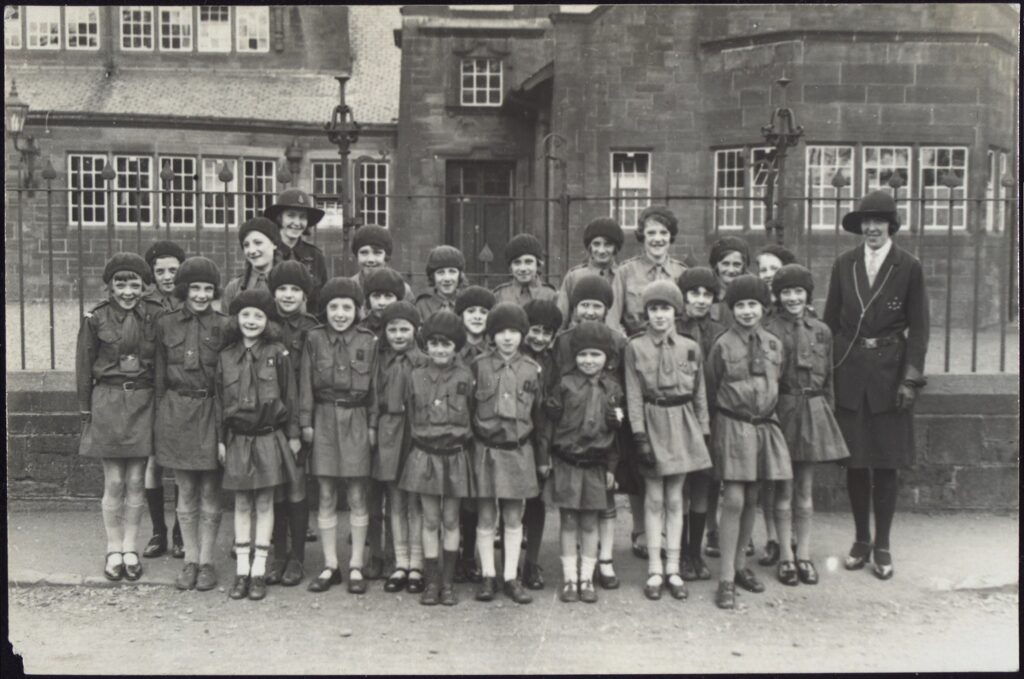If, like me, you were a Girlguide or Scout when you were a child, you may well have happy memories of toasting marshmallows around a campfire. Or trying your hand at archery or canoeing, or camping in a rain-soaked field.
What you might not know, however, is that the history of Guiding is long, a little surprising, and not without its controversies. Today, Girlguiding champions building the confidence and skills of its young female members. But the original aims of the organisation were not so admirable.
Do it Like a Girl
The founding of the Girlguiding movement came hot off the heels of the Scouting movement. Robert Baden-Powell, a decorated British Army Officer, founded the Boy Scouts in 1907. The aim was to instill patriotic values and self-discipline in boys. The first Scouting Rally took place at Crystal Palace in London in 1909.
In response to the male movement, a group of girls gate-crashed the first Scouting Rally in homemade uniforms and badges, demanding ‘something for girls.’ Agnes, the sister of Robert, established the Girlguiding Association in 1910 and became its president.
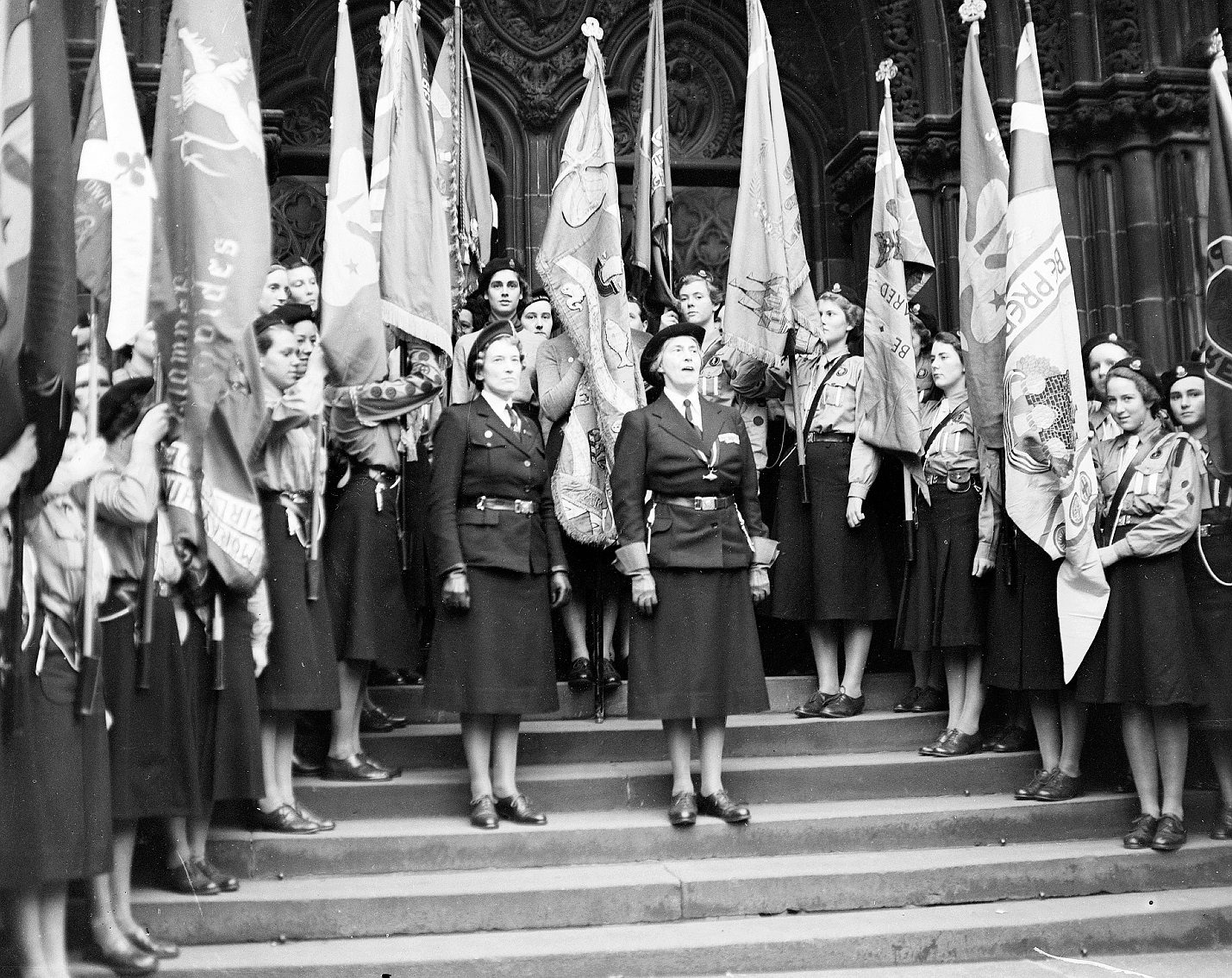
Lady Baden-Powell addresses from the steps of St Giles Cathedral in Edinburgh, c. 1953.
© The Scotsman Publications Ltd. Licensor www.scran.ac.uk
Here in Scotland, however, a 13-year-old girl named Allison Cargill had established her own patrol a whole year before Agnes Baden-Powell officially founded the movement. Along with five friends from Laurel Bank School, they formed the Cuckoo Patrol and met regularly in the stable loft of Allison’s home. Allison went on to become Scotland’s first Girlguide and in 1953 became President of Girlguiding Scotland.
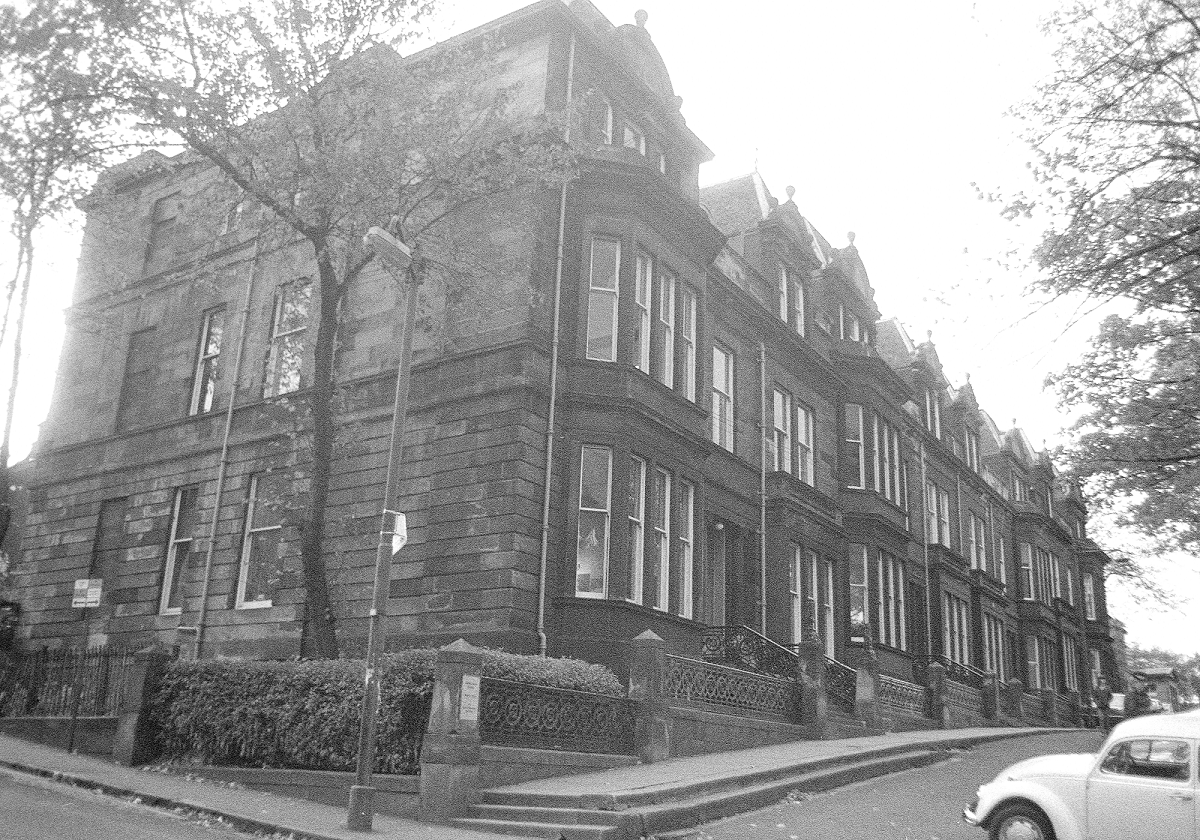
This is an archive photo of Laurel Bank School on Lilybank Terrace, Strathclyde. Zoom in on Canmore
The story so far sounds delightful, I’ll admit: teenage girls forming their own patrols and rebelliously crashing the male-dominated movement to assert their right to join in the fun. The reality, however, is a little different, and as with all history, it’s not as rosy as it first appears.
Scouting for boys – and girls?
The core principals of the Scouting movement were condensed into a handbook, helpfully titled “Scouting for Boys”. In the book, Baden-Powel outlines the core values of the movement. He intended it to be an instructional guide on how to be a good Scout. But it seemed only fair that the Guides should get the same. “The Handbook for Girl Guides or How Girls Can Help Build Up the Empire” was the first edition and adapted much of the Scout content but with a few key differences.
As well as skills such as camping, tracking, treating injuries, and sports, the Guiding handbook taught skills such as housekeeping, caring for children, and nursing. The guidebook claims that it was essential for girls to learn these skills so they could become good wives and mothers and support men in their preservation and defence of the British Empire. The guidebook cautions its reader: ‘We endeavour to show the girl that her own sphere is the best, and that her place is not as the rival to men, but as the complement or helpmate’. So much for girl power.
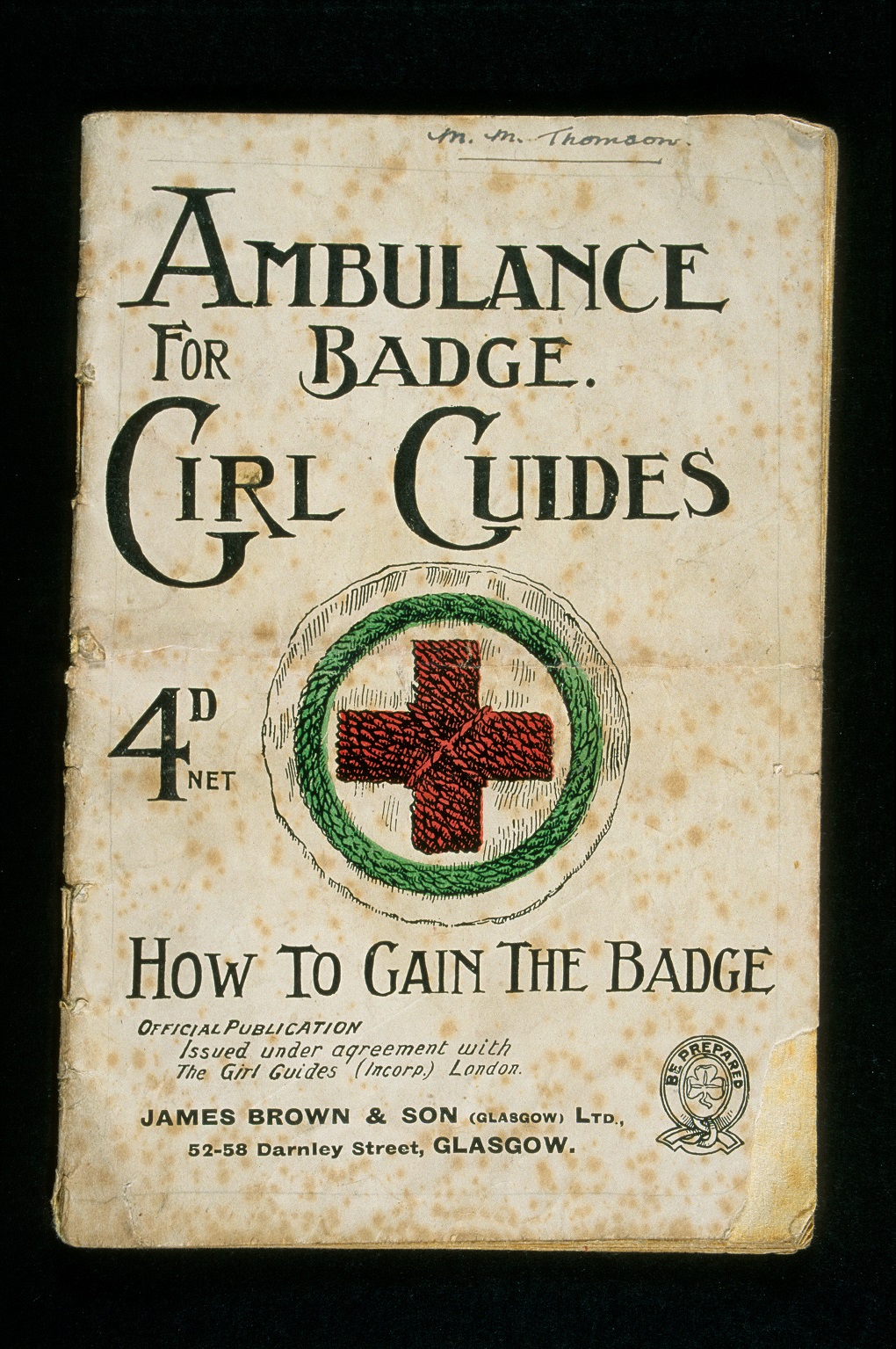
A copy of the Ambulance Badge handbook, this copy belonging to a member of the 8th Midlothian Guides.
© Midlothian Guides. Licensor www.scran.ac.uk
‘Helping Build Up the Empire’
The imperial sentiments of this first guidebook ring clear and cannot be ignored. One instructional campfire story tells of young Ann, a Canadian girl who hears of an impending attack on her town by members of the indigenous population. Only by using her wilderness skills is she able to rush to the Church and warn the community in time to prevent the attack. The message here is that with the right skills, the average British girl can be smart enough to help herself and her community in their defence of the Empire.
The sentiments of the guidebook undoubtedly reinforced the damaging imperial mindset present in Britain at this time as well as teaching girls that, yes, they can learn wilderness skills, but only to serve their fathers, brothers, and future husbands.
Thankfully, these imperial themes found in the first handbook did not last long, by the 1918 edition, much of this sentiment was removed and the focus on developing new skills was reinforced. However, the sense of patriotism and serving the country remained.
Girlguiding in the Archives
One of the more positive, if somewhat stereotypical, elements of Girlguiding is the camping trips. If (like me) you found getting rained on in fields enjoyable, it was a recipe for a happy weekend! If not… they may have been slightly less enjoyable, but no less memorable. The Scran archive holds many archive photos of happy campers from times past.

The Currie Company of Girlguides pictured in 1926, probably at Kinleith.
© National Museums Scotland. Licensor www.scran.ac.uk
The Currie Company pictured above sport their uniforms proudly – another memorable element of Guiding. It may surprise you (or perhaps not at this point) that these original uniforms, with wide-brimmed hats and collared shirts, were based on the uniforms of soldiers from the Boer Wars in South Africa. This conflict between the British Empire and the Boer States was devastating in its destruction of the South African land and people, and rightly remains an example of British colonial ruthlessness and cruelty.
The uniforms of the Guides, like the handbook, were adapted to tone down the colonial influences. By the 1960s and 70s, the uniforms become slightly more casual and better suited to camping and outdoor adventure – or barbequing, in the case of these Edinburgh Guides.
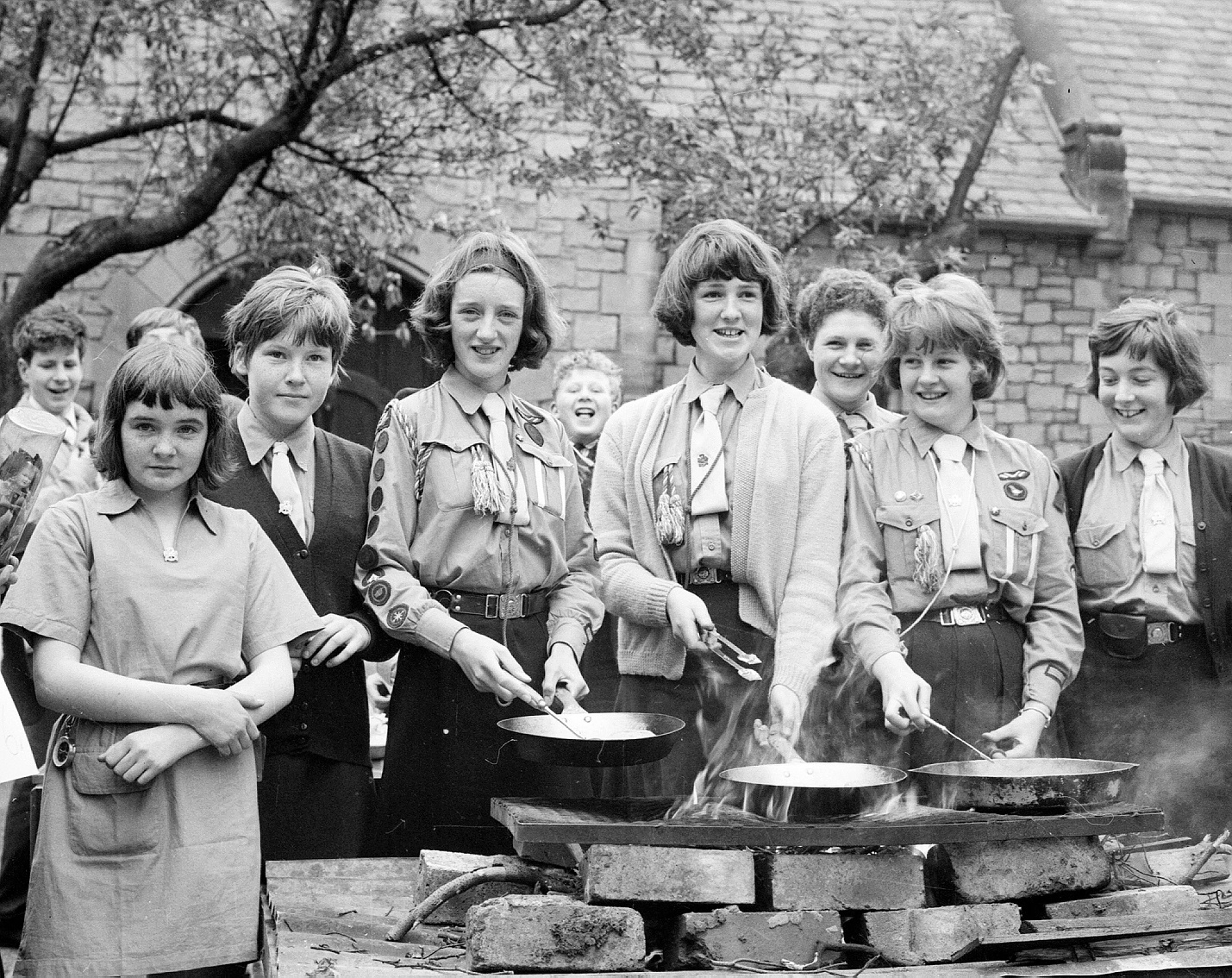
A group of Girlguides hold a barbeque at Reid Memorial Church, Edinburgh.
© The Scotsman Publications Ltd. Licensor www.scran.ac.uk
Many Guide groups made visits to historic sites for educational or recreational reasons, much as today. The group from Loanhead in the picutre below are likely visiting Dryburgh Abbey near Melrose. The site is now in the care of Historic Environment Scotland.
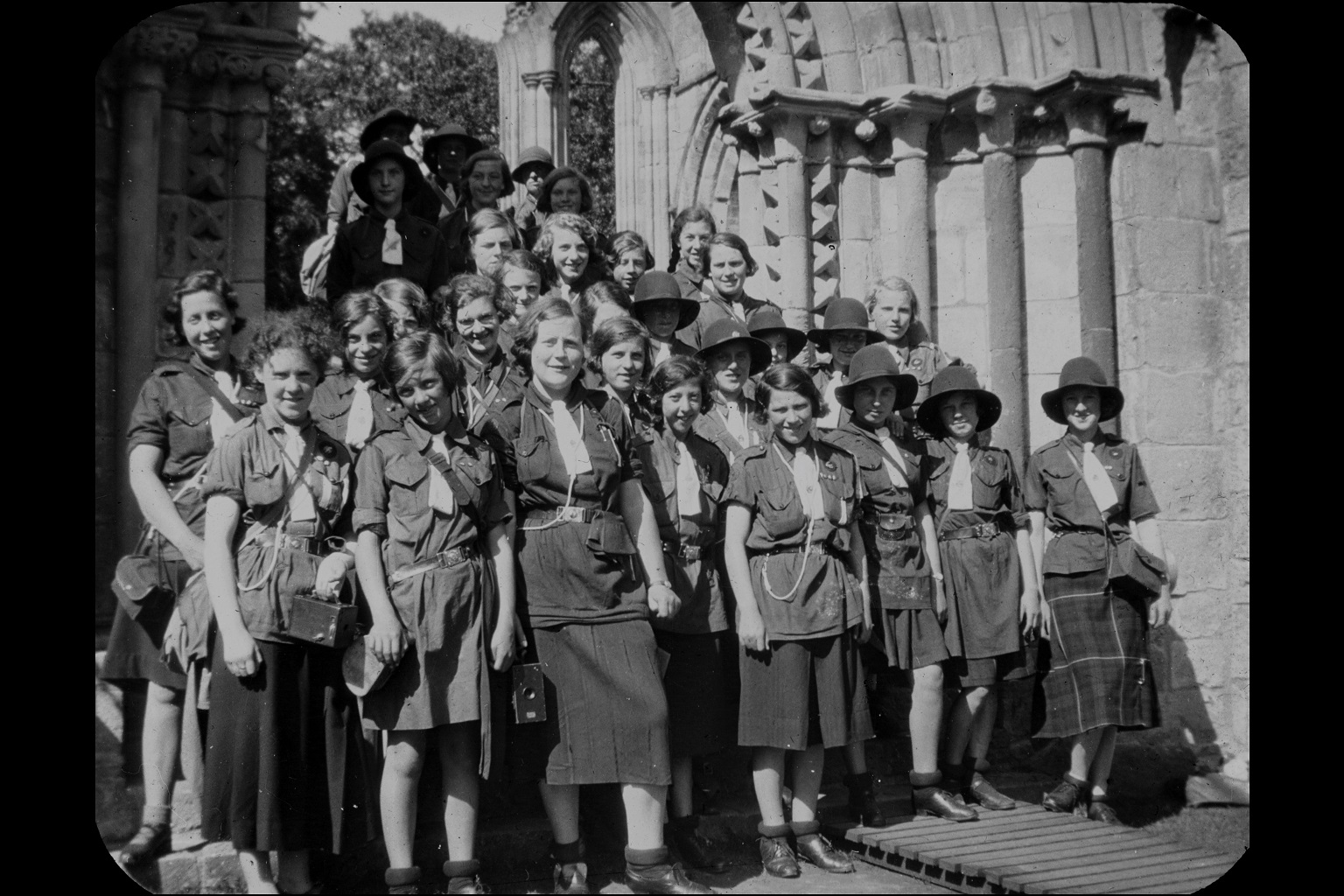
A Group of Guides from first Loanhead Company visit a historic site, likely Dryburgh Abbey.
© Miss Angela Stewart. Licensor www.scran.ac.uk
The Modern Girlguide
Today, Girlguiding celebrates the opposite of what the youth groups were originally founded for. It champions female empowerment, diversity and equality, and body confidence. The days of the Nursing and Housekeeping Badges are over. Now, girls can complete their Activism Badge, Vlogging Badge, and Conscious Consumer Badge. When I was a Guide, I proudly completed my Confectioners Badge, not through any burning desire to become a good wife and mother, but simply because I wanted to eat cake.
The religious element of Guiding has also changed. All members of Girlguiding make their Promise at various points throughout their time with Guides. The Promise encapsulates the core values of being a Guide. It is viewed as the moment when a girl ‘officially’ becomes a Guide. Originally, Guides promised to ‘do (their) duty to God and the King’. This changed to ‘love my God, to serve my Queen and my country’ by the time I made my Promise. Many Girlguide groups met in church halls and were heavily involved in local Christian communities, often processing to church on Sundays and being involved in the services. This, understandably, was very exclusionary to those of non-Christian faith and felt archaic even ten years ago when I was a Guide.
Today, Girlguiding has acknowledged that their membership is largely no longer Christian and has changed to Promise accordingly. Now, girls promise ‘to be true to myself and develop my beliefs’ and ‘to serve the King and my community’. Additionally, groups in different faith-based communities like the Edinburgh Muslim Scout group, 8th Braid Salaam Scouts, are also becoming more common.
Since 1991, Scouting has been fully accessible to girls. Now, there are even more opportunities for young girls to find inclusive spaces where they can try new things and develop their skills.
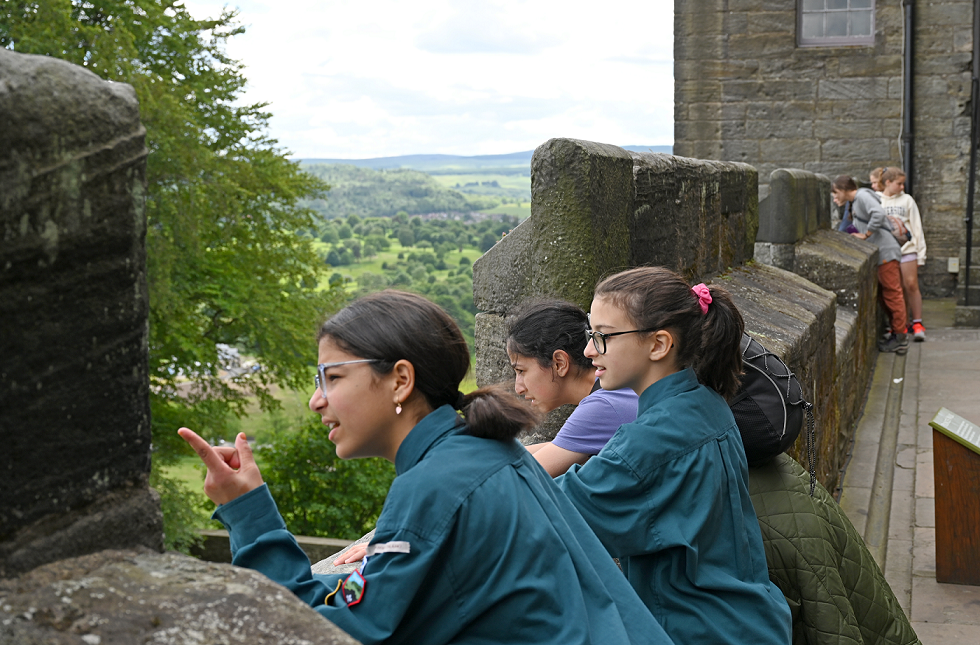
Braid Muslim Scouts visiting Stirling Castle in 2022.
Girlguiding and Scouting provide undeniable value to their young members today and both are far from where they began. The imperial vision set out by the Baden-Powells is rightly acknowledged as harmful, outdated, and deplorable. These ideals do not characterise the organisations today. However, remembering their history is essential to understanding how Guiding and Scouting came to be and knowing where they will go next.
Explore Scotland’s history with your group
Uniformed groups such as Guides and Scouts can visit Historic Environment Scotland properties for free with our free learning visits. Follow the link to find out more or book a visit for your group.
There are many more stories of Scotland’s women’s history to explore. Read more on our blog.
Header image: The Brownie pack at Johnstone, Renfrewshire, c. 1929 © National Museums Scotland. Licensor www.scran.ac.uk

